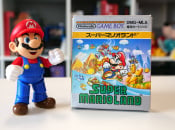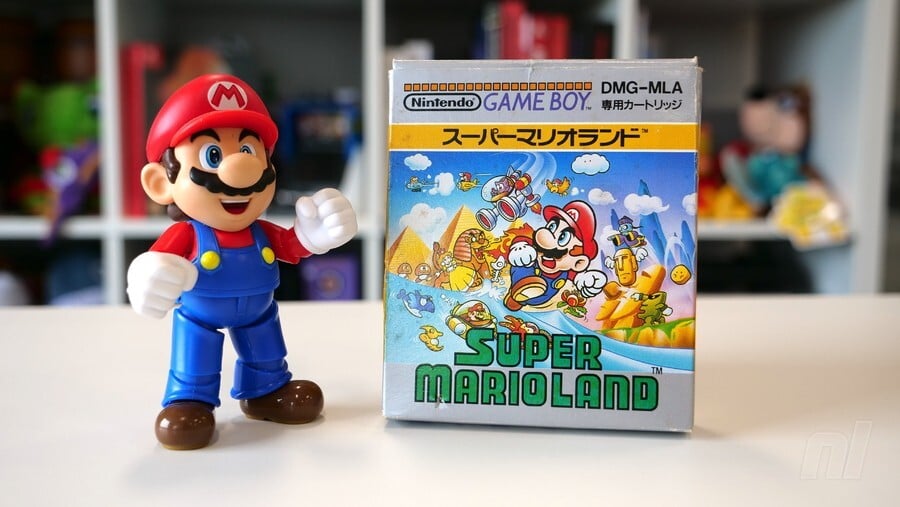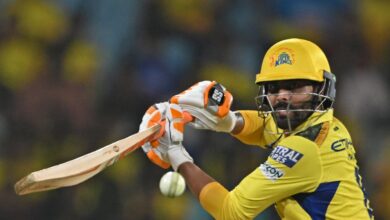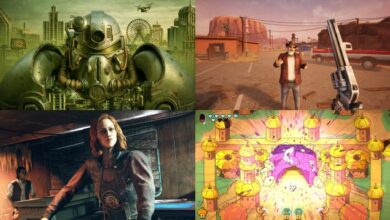Guide: Best First-Party Game Boy Games


21st April 2024 marks the 35th anniversary of Nintendo’s Game Boy. Over the next few days, we’ll be publishing various features to celebrate three-and-a-half decades of the humble handheld. We kick things off with this reader-ranked list.
Remember, this is based on each game’s User Rating in our database and is therefore subject to real-time alteration even after publication. Enjoy!
Looking for a list of Nintendo’s first-party Game Boy games? Wonder what the best first-party Game Boy game is? We’re here to help.

Our ranked list of the Top 50 Best Game Boy Games Ever covers every game on the system, but here we’re looking specifically at Nintendo-developed Game Boy games released in the West. All of the games below were developed (or co-developed) by Nintendo and therefore represent the company’s in-house output on the Game Boy. Not the Game Boy Color or the Game Boy Advance, just the original DMG-001 and its Pocket follow-up. And Nintendo published other titles, too; these are just the Nintendo-developed games, so none of HAL’s Kirbys or the Rare-developed DKCs.
This is a reader-ranked list based on the User Ratings of each game in our database. As such, it’s subject to real-time change at any time. If you haven’t personally rated any of the games below, you can assign them a score out of 10 right now and exert your influence on the ranking. You can also use the search bar below to quickly find any Nintendo-developed Game Boy games and rate them as you wish:
So, let’s take a look at every first-party Game Boy game, as ranked by you, beginning at the bottom…
25. Baseball (GB)
Baseball was never a good game, but the ability to play it with friends meant it was a functional addition to any Game Boy library. Any fond memories you have of Baseball include a second player, we can assure you. Without that second player, even nostalgia won’t help; this is not the game you remember. You can understand the mechanical simplicity given the hardware, and a certain level of appeal given the lack of portable baseball alternatives in 1989, but this one is not worth chasing these days.
24. Magnetic Soccer (GB)
This one may not be familiar to soccer-loving US Game Boy owners, although to be fair it’s unlikely to be at the forefront of European footy fans’ minds, either. Released in 1992 exclusively in Europe, Magnetic Soccer was Nintendo’s lacklustre, top-down take on foosball and certainly not something that sticks in the memory.
It’s pretty much standard table football, with rows of players scootching left or right as you chase the ball around the table, aiming for the (massive) goal at the opposite end. You can hold the ball and power up shots, which makes things a little more interesting, but it’s very basic stuff and the audio grates within moments of starting a match.
23. Radar Mission (GB)
Essentially Nintendo’s take on Battleships, Radar Mission is still a fun little piece of turn-based gaming history, and its charming presentation and excellent soundtrack mean it has aged far better than it might have. Co-developed by Pax Softnica and Nintendo R&D1, it will appeal to anyone interested in the inspiration for the company’s aquatic IP such as Steel Diver, or gamers looking for some simple-yet-strategic gameplay with a retro kick. An inessential curio, then.
22. Alleyway (GB)
Aside from the Mario cameos (if you pay attention when starting the game, you’ll see that Mario himself jumps into the paddle and pilots it, and many of the bonus stages are shaped like Mario characters), there’s not much to say about Alleyway. You bounce the ball with your paddle to break all the blocks on the screen, in time-honoured Breakout style. At its best, it’s simply Arkanoid without all the fluff. If you grew up with it or you’re after some reasonably compelling block-breaking, you might get a kick out of it.
21. F-1 Race (GB)
Loosely based on the HAL Laboratory-developed F1 Race for the Famicom released six years prior (which Satoru Iwata programmed, no less), F-1 Race is a decent globe-trotting racer perhaps most notable for the version that bundled in the Game Boy Four Player Adapter, which — surprise! — enabled four-player races. With cameos from a bunch of Nintendo characters, this was an impressive little title [insert limited hardware caveat here] and good fun if you could rally other racers to join you.
20. Kirby’s Block Ball (GB)
A first playthrough of Kirby’s Block Ball lasts about three hours — it’ll take most players longer to surmount each world’s benchmark high score and unlock the final world — and there’s replay value to be found in score-making. The classic gameplay of Breakout and the delightful Kirby presentation, music, and unique power-ups come together well, even if there can be a tad too much waiting and hoping in later worlds. Still, Block Ball is a solid block of entertainment.
19. Metroid II: Return of Samus (GB)
Metroid II: Return of Samus expands on the original NES title nicely. There’s still no map for the game’s giant world, which isn’t necessarily a problem due to this game’s linearity, although it can be an issue if you put it down for a while and don’t remember where you got to. There’s a decent amount of exploration and hidden items to find, and the hunt to find and kill the 39 Metroids is fairly fun. Although nowhere near as refined as the 2D masterpiece that is Super Metroid, Metroid II has held up better than the original NES game and as such is still very much worth playing. Of course, the 3DS remake is arguably the best way to play the first return of Samus these days, but the original still has a lo-fi charm of its own.
18. Wave Race (GB)
This original top-down Wave Race kicked off the series in 1992, although its sequels on Nintendo 64 and GameCube would make far bigger splashes in the future. Don’t get us wrong, this a fine game in its own right (especially if you’ve got a link cable and three pals), but the majesty of its successor’s wave physics wasn’t possible on Game Boy and, while fun, this is merely a competent (wave) racer.
17. Solar Striker (GB)
A first-party vertical-scrolling shmup, Gunpei Yokoi and Satoru Okada — the two designers primarily responsible for the Game Boy itself — were deeply involved in the development of Solar Striker. Released in 1990, within a year of the Game Boy’s debut, its hectic action showed just what the modest machine was capable of and, while it hasn’t gone down as a celebrated classic in Nintendo’s annals, it’s still a quietly solid shooter with an excellent soundtrack.
16. Tennis (GB)
Between the NES and Game Boy versions of Tennis, this is the one people usually remember, and for good reason: it’s a lot more enjoyable simply due to its presentation. As with the similarly bluntly-named Golf, it’s a basic game but extremely solid in those basics. It’s got impressive controls and physics for such a small title, and while there’s not really that much to do, you’re getting an enjoyable, fun little game which will keep you entertained for a set or so. Perfect for a short trip, although we’d recommend Camelot’s Mario Tennis on GBC if you’re after something with more strings on its racket.
15. Golf (GB)
While certainly basic, Golf doesn’t have many overt flaws. You get a simple game conducive to short bursts that controls well and looks quite good. But you don’t get much that will keep you coming back: with only two courses and no surprises along the way, the game starts to feel very repetitive very quickly. If you love golf games, you probably have something better to play already. And if you don’t, this probably isn’t the best place to start.
14. Super Mario Land (GB)
Super Mario Land was an impressive accomplishment in 1989. The sequel might have made this first shot at translating the plumber’s platforming to the overworked, underpowered handheld seem quaint by comparison, but it’s still a fun Super Mario experience, albeit a short one. Crafted by Gunpei Yokoi’s R&D1 rather than Shigeru Miyamoto’s team, it’s a surreal yet compelling take on the template which takes some adjusting to nowadays. And just when things are really getting good, the credits roll.
If you haven’t played Super Mario Land before, you owe it to yourself to try this — it’s worth playing through at least once to see where Mario’s portable adventures began. Cracking music, too.
13. Kid Icarus: Of Myths and Monsters (GB)
If you’re a fan of Kid Icarus on the NES, you owe it to yourself to pick up the sequel. Not only does it capture the same magic found in the NES release, but it builds on many of the great gameplay ideas featured in the original. The difficulty has been toned down to make it a bit more approachable, but there’s still plenty of challenge to be found and a fairly lengthy adventure. Some fantastic boss fights make for particular highlights, and Kid Icarus: Of Myths & Monsters is a great prelude to Kid Icarus: Uprising.



